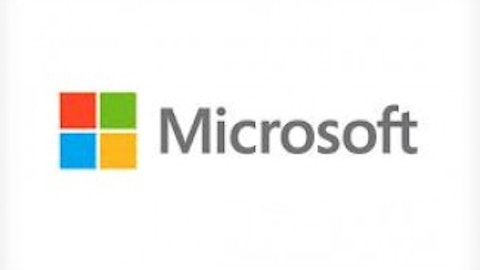
Best in the world
Oracle Corporation (NYSE:ORCL) is the world’s number one enterprise software provider. Its acquisitiveness has kept competitors at bay while allowing the company to expand its product offering. The acquisitions of PeopleSoft and Siebel enabled Oracle to enter application software, which the company has used to further its entrenchment in customers’ businesses.
Customers have come to rely on Oracle for mission-critical databases and applications. Not only are these products highly integrated into the day-to-day business of Oracle Corporation (NYSE:ORCL) customers, they are also crucial to the success of the customers’ business. Customers are often unwilling to switch to a different provider simply due to price differences because the risk of downtime or integration problems is too high.
As a result of these enormous (and growing) switching costs, Oracle’s cash flows are secure for the foreseeable future.
In addition, Larry Ellison has shown himself to be a prudent capital allocator. The founder and CEO owns 23% of the common stock and has made many shrewd acquisitions, even if they appeared overvalued at the time. The company has repurchased $11 billion in stock in recent years and continues to pay a strong dividend. In addition, it carries ample cash on the balance sheet for acquisitions and continued repurchases.
Competition
The only way for Oracle Corporation (NYSE:ORCL)’s free cash flow to decline is if competition starts to eat away at its market share. Although most of the risk comes from start-ups and smaller software firms in general, the company can easily acquire those companies and count the acquisition as a cost of protecting its moat.
Oracle’s real competition comes from bigger players like SAP AG (ADR) (NYSE:SAP) and International Business Machines Corp. (NYSE:IBM).
SAP AG (ADR) (NYSE:SAP) is a threat to Oracle because of its market position in cloud computing. Although Larry Ellison would say that cloud computing is just a new name for what Oracle already does, SAP’s cloud computing segment represents a significant threat to his business.
SAP’s large installed base of enterprise customers gives the company the same benefit from significant switching costs that Oracle enjoys, and affords it time to build out its cloud services.
SAP AG (ADR) (NYSE:SAP)’s cloud offering includes HANA — a high-speed database and analytics tool that is the company’s key growth driver. HANA is the key differentiator between SAP and Oracle’s offering, but Ellison thinks it is over hyped. The Oracle founder says SAP’s boasts about the rapid adoption of HANA are simply false; he says none of his customers are leaving Oracle Corporation (NYSE:ORCL) for HANA. Meanwhile, Ellison claims that Oracle’s cloud offering is currently on a $1 billion run-rate, which is bigger than SAP’s cloud business.
In any case, Oracle has been acquiring companies in the cloud space and its installed base is unlikely to be wooed away by SAP. Therefore, most of the competition will take place at the margin. Each incremental customer will be more difficult to acquire, but Oracle’s current cash flows remain safe from SAP.
Meanwhile, Oracle maintains a steady advantage over International Business Machines Corp. (NYSE:IBM) in that it provides a whole range of solutions — database software, application software, and hardware — compared to a more narrow range provided by IBM.
Oracle Corporation (NYSE:ORCL)’s acquisition of Sun Microsystems placed it in direct competition with IBM’s servers. Oracle’s newest servers are faster than IBM’s and are less expensive. However, International Business Machines Corp. (NYSE:IBM)’s servers tend to be more reliable and have a reputation for strong security — an important component in the value proposition.
IBM’s mainframes continue to sell well in the financial services industry, but the proliferation of cloud computing is lessening the demand for IBM’s expensive systems. Like Oracle, IBM faces competition from players in the cloud space like SAP and Workday. In fact, the proliferation of lower-priced cloud technology hurts the bottom line of IBM and Oracle alike; both would rather sell customers on their higher-priced integrated solutions. But IBM’s strong relationships and current integration into customers’ businesses will enable the company to retain much of its current customer base, while new customers will increasingly look to SAP and Oracle, which can provide a broader range of SAAS.
Investment case
On the surface, Oracle Corporation (NYSE:ORCL) trades at 14 times trailing earnings. However, after backing out $3 in net cash, the company trades at just 10 times free cash flow. A 10% free cash flow yield — for a company that is almost certain to grow cash flows over the next five years — is a bargain. For Oracle to trade this low, it is an opportunity too good to pass up.
The article This Software Behemoth Is Priced for a Meltdown originally appeared on Fool.com and is written by Ted Cooper.
Ted Cooper has no position in any stocks mentioned. The Motley Fool owns shares of International Business Machines (NYSE:IBM). and Oracle. Ted is a member of The Motley Fool Blog Network — entries represent the personal opinion of the blogger and are not formally edited.
Copyright © 1995 – 2013 The Motley Fool, LLC. All rights reserved. The Motley Fool has a disclosure policy.




